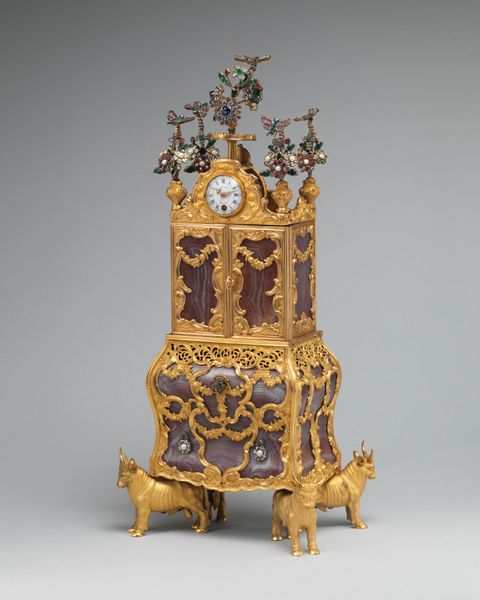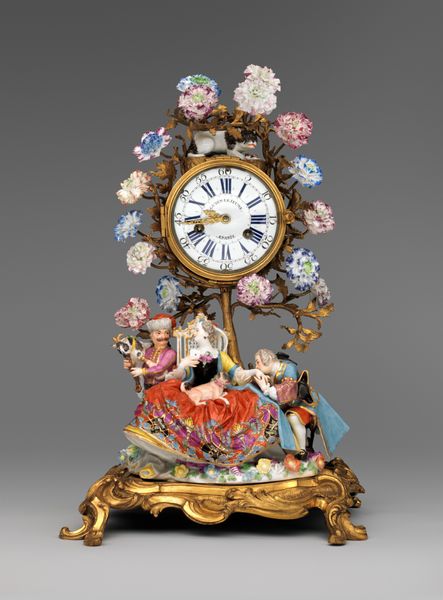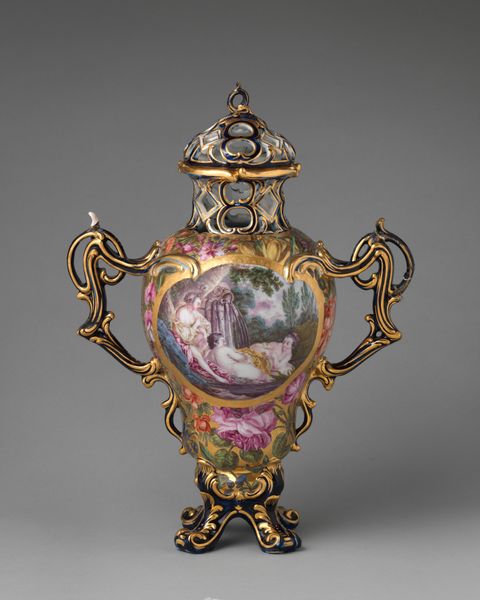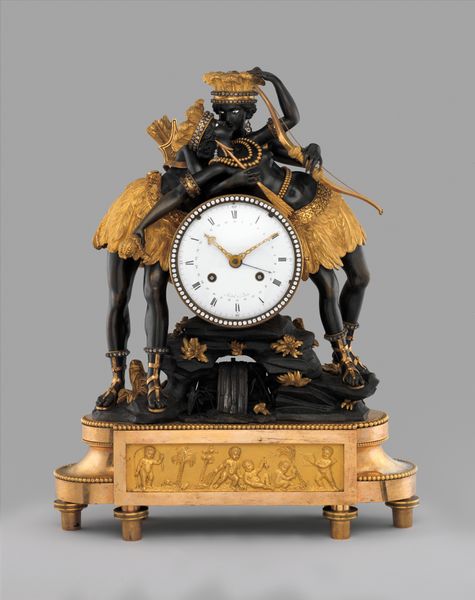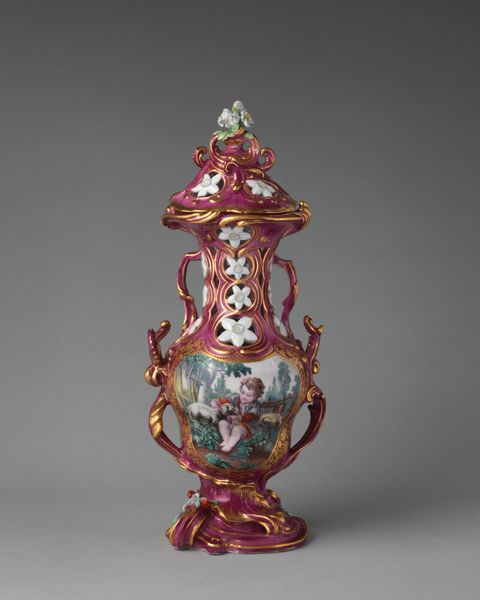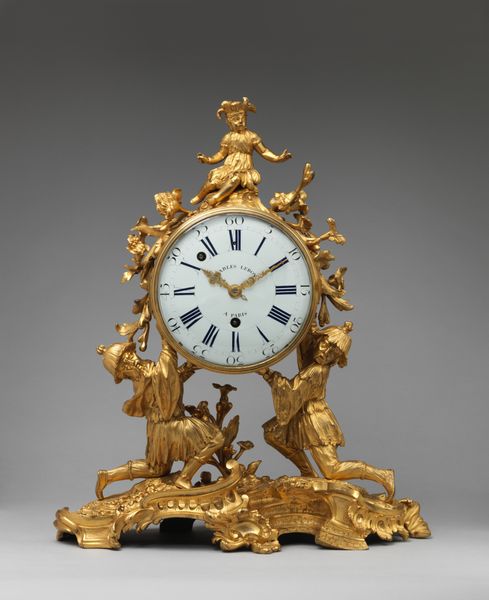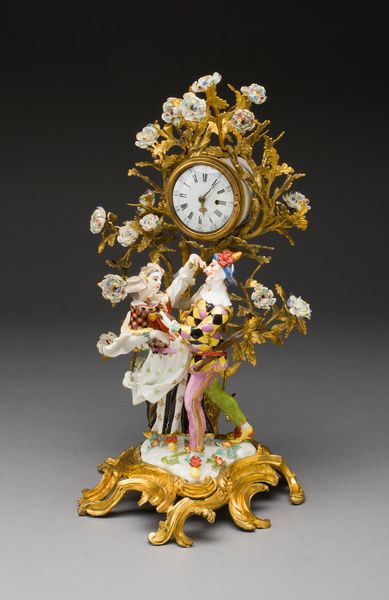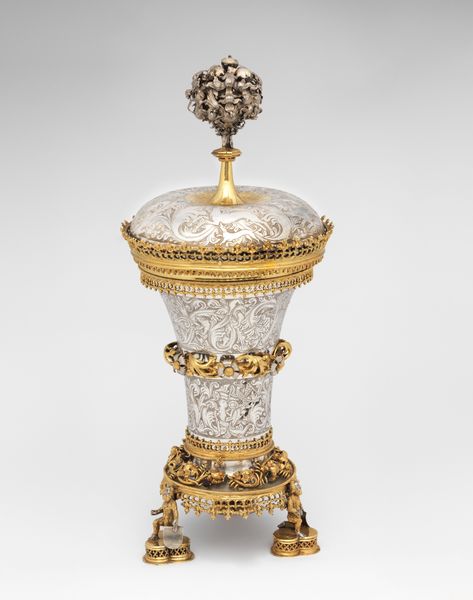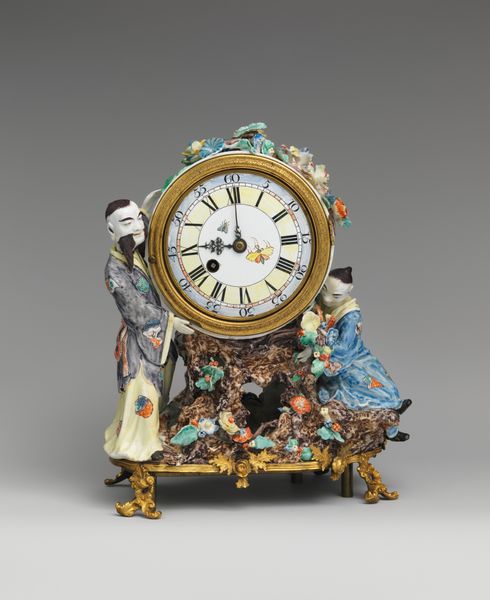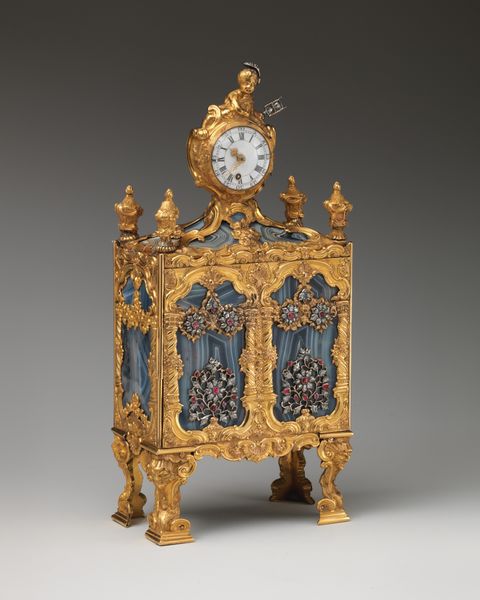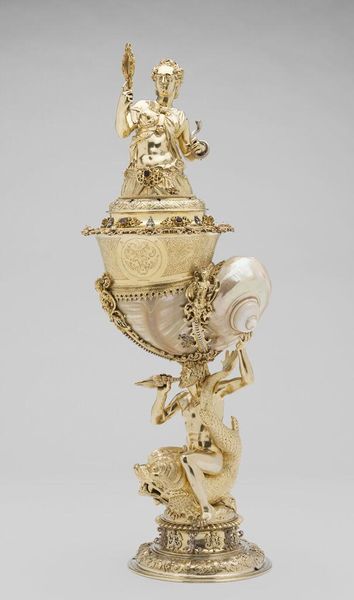
Automaton in the form of a chariot pushed by a Chinese attendant and set with a clock 1766
0:00
0:00
Dimensions: Overall: 10 1/4 × 6 3/8 × 3 1/4 in. (26 × 16.2 × 8.3 cm)
Copyright: Public Domain
Editor: Here we have "Automaton in the form of a chariot pushed by a Chinese attendant and set with a clock," crafted around 1766. It's the work of James Cox, made from materials like gold and brass. It strikes me as opulent, even fantastical, and has miniature details, though with perhaps a hint of underlying cultural tensions given its presentation of Asian figures. What do you make of it? Curator: The automaton is dripping with symbolic weight. Think of the clock itself—time, status, power over one's own life presented as a possession. Then there's the chariot, a vehicle often associated with conquest and authority, here miniaturized and presented as a delicate curiosity. Note that this Asian figure propels it all, subtly placing the "exotic" East in service of European ambition and technology. Do you notice the Baroque style, and what that suggests in this context? Editor: Yes, I see it now! The curves, the embellishments... it’s pure display, isn't it? Meant to overwhelm. So the cultural narrative, it seems, becomes another layer of ornamentation. What’s being remembered and celebrated here is power— expressed in a beautiful but complicated package. Curator: Precisely! Every detail—the gold, the pearls, the figures—contributes to a grand, yet problematic tableau. Cultural memory can be a double-edged sword, celebrated for the splendor of craft while at the same time asking hard questions about whose stories are being told and at what cost. Editor: Thanks for pointing out how each piece contributes to the visual symbols in the chariot. I had not realized its historical value to such depth. Curator: It shows us that, if one looks deep enough, we are rewarded with insights.
Comments
No comments
Be the first to comment and join the conversation on the ultimate creative platform.
